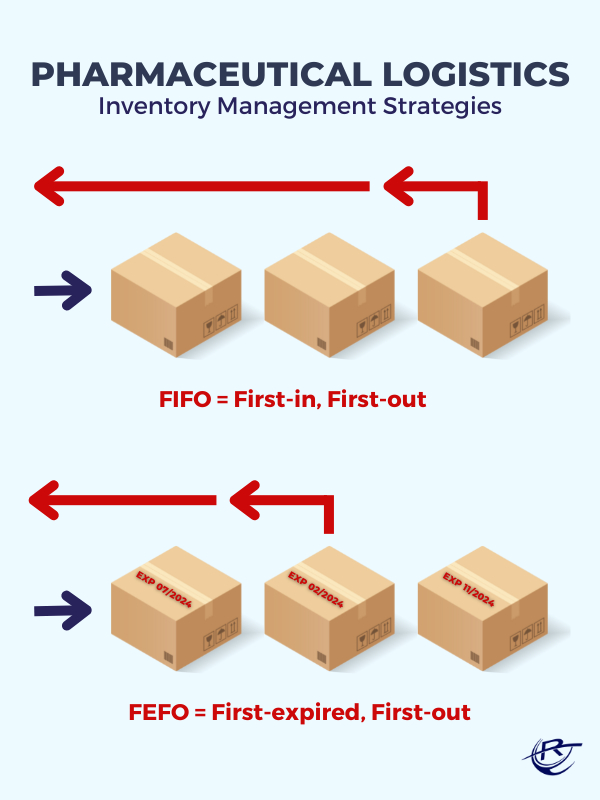
When it comes to inventory management, product rotation should be a top priority for your small niche pharmaceutical company. A solid strategy can help you to maximize your budget and support year-over-year (YoY) fiscal growth. How you manage inventory ultimately will affect your bottom line.
A good inventory management strategy will:
- Ensure your products are rotated accordingly to prevent order returns and/or cancellations.
- Guarantee your products remain organized and avoid loss from expiration or obsolescence. Carrying only what’s necessary means efficient use of your total budget.
- Enable you to make better business decisions by outlining a delivery routine that suits your current pharma needs and focuses on lowering transportation costs.
Product rotation supports your business operations at a company-wide level. There are two types of inventory management strategies that are commonly used inside a warehouse—first-in, first-out (FIFO) and first-expire, first-out (FEFO). We’ll go over the ins and outs of both strategies to help you decide which strategy is your best fit.
FIFO Inventory Management Strategy
Product rotation adhering to the FIFO strategy, or first-in, first-out, means that you aim to sell the pharmaceutical products that arrive at your warehouse first. Older products will be placed near the front while newer inventory will be stocked further back. This strategy works best for products that do NOT carry an expiry date, have no limited shelf-life, or experience a shorter demand cycle.
The FIFO strategy allows your pharma company to avoid dead stock and reduce the overall impact of inflation by increasing your profit margin. Assuming that inflation is a constant, products purchased previously would cost less than those in future orders. Let’s say you place an order at $5 per unit, then later place another order at $10 per unit. Managing your inventory using the FIFO strategy would mean that the oldest products would be sold first and your higher-valued products would remain in stock. Additionally, you’ll be able to monitor your inventory and adjust depending on current demand.
FEFO Inventory Management Strategy
The FEFO strategy, or first-expire, first-out, warrants that the product with the shortest expiry date is rotated out and sold first. This makes it possible for your pharma company to avoid business overheads from product waste or costs associated with returns and order cancellations.
Implementing FEFO to manage your inventory also means that you are providing your customers with products that maintain their quality and have a sufficient shelf-life upon arrival. The World Health Organization’s (WHO) Good Storage and Distribution Practices for Medical Products states that materials and medical products should be stored in conditions that ensure product quality. The FEFO strategy is best for products with expiry dates that require proper rotation to account for ample shelf-life.

Take away
An inventory management strategy will help your pharma company to avoid unnecessary loss from product waste and order shortfalls. Product rotation should depend on the product itself. There are two methods commonly used in pharmaceutical warehouses—FIFO and FEFO.
FIFO is first-in, first-out, and is best for products that do NOT have an expiry date.
FEFO is first-expired, first-out, and should be used with expiry-dated medical products.
Reliance Wholesale provides clients with top-notch customer service to ensure inventories receive the highest efficiencies throughout their product journey. Our team will help you determine which inventory management strategy is the best for your product line. We’ll support your pharma company in creating sustainable growth and adjusting to meet current demand so you can preserve peace of mind.
You have our promise that we will not rest until you are completely satisfied.
Contact us today and take control of your inventory with our logistics solutions.


